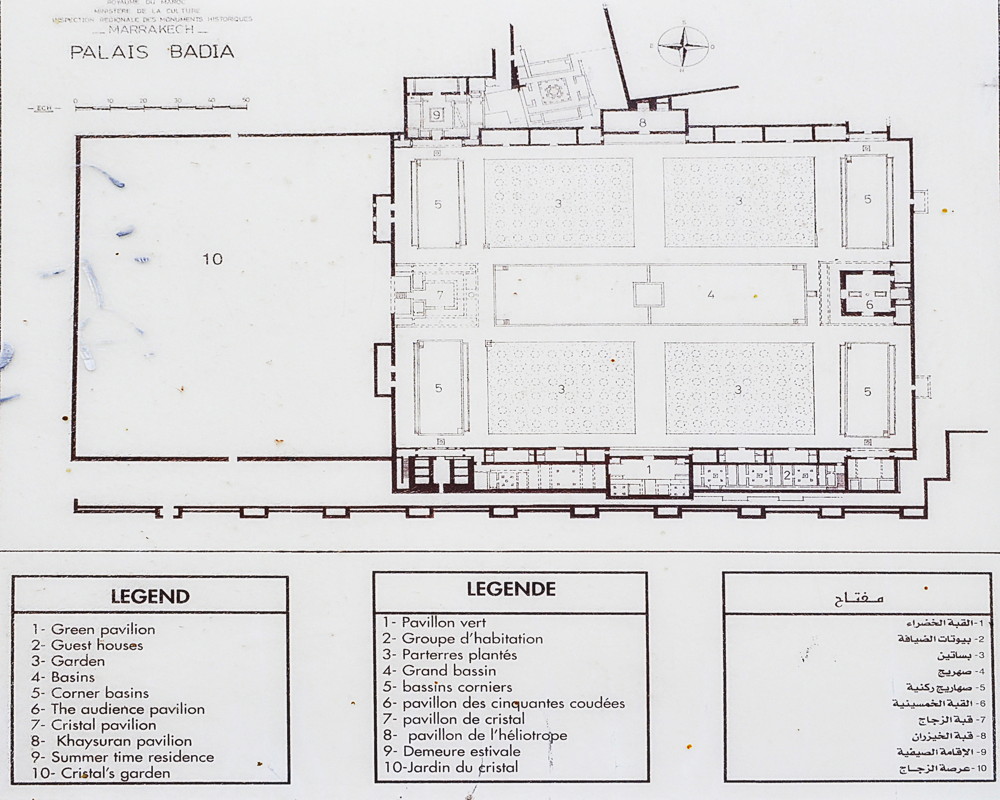El Badi Palace (sometimes spelled El Badiî or El Badia, literally “palace of the incomparable”) is an architectural complex built in the late 16th century and located in Marrakech, Morocco. Former palace, it was built by the Saadian sultan Ahmed al-Mansur Dhahbi to celebrate the victory over the Portuguese army, in 1578, in the battle of the Three Kings with more than 300 rooms decorated with the best materials of the time: gold, turquoise and crystal. Today, only a huge sculpted garden remains, sprinkled with orange trees and surrounded by high walls. The decline of the palace came at the end of the 17th century, when Sultan Moulay Ismail decided to move the capital of Marrakech to Meknes, completely sacking the El Badi Palace.
To build this palace, the Sultan chose an ancient Almohad garden, near his private apartments. The astrologers and religious personalities consulted approved the speedy and fixed the start of the works in December 1578. The palace complex is a precious testimony to the knowledge of Moroccan architecture of the sixteenth century. The contributions and foreign influences are numerous: in fact, the general layout of the building and the decorations attest to the influence of Granada. The main access to the palace was from the southwest, through the gate of “Bab Al-Rokham” (marble gate). The plan is organized around a vast rectangular courtyard of 135 meters by 110 meters. The center of the latter was decorated with a basin of 90 meters by 20 which had in its center a monumental fountain. Around the large central courtyard, on the east and west sides, two pavilions faced each other: the “crystal pavilion” and the “audience pavilion” of almost identical plan. The north and south sides were occupied by the “green pavilion” as well as that of the “heliotrope” which had two open galleries.

KOUTOUBIA MINBAR
To make the palace more interesting is the Minbar (pulpit) of the Koutoubia displayed inside. It is carved in cedar wood, with inlays and engravings in gold and silver made in the 12th century by the artisans of Cordoba.
Are you planning to visit Morocco? Book your travel experience today!

